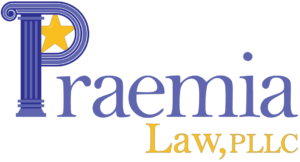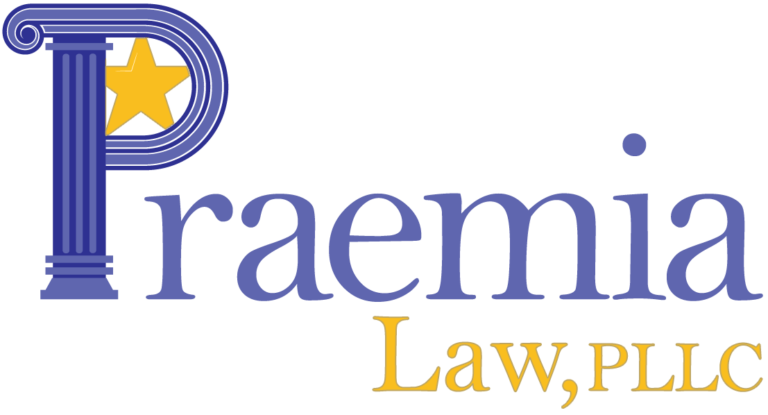In December 2017, the National Labor Relations Board (“NLRB”) overruled its controversial decision in Browning-Ferris Industries of California, 362 NLRB No. 186 (2015), which expanded the scope of joint-employer liability, and returned to the Board’s pre-Browning-Ferris standard. In Hy-Brand Industrial Contractors, Ltd., 365 NLRB No. 156 (2017), the NLRB ruled that, in all future and pending cases, two or more entities will be deemed joint employers under the NLRA if there is proof that one entity actually has exercised control over essential employment terms of another entity’s employees (rather than merely having reserved the right to exercise control) and has done so directly and immediately (rather than indirectly) in a manner that is not limited and routine.
Hy-Brand, however, did not have legs. Just over two months following Hy-Brand, the Board vacated it based on an apparently unprecedented action by the NLRB Office of Inspector General, which determined that one of the NLRB members who decided the case should have recused himself. As a result, for now, Browning-Ferris remains good law.
Browning-Ferris Changed the Joint-Employer Standard under the NLRA. In a 3-2 decision issued in 2015 involving Browning-Ferris Industries of California, the NLRB redefined its standard for determining joint-employer status. The Board held that two or more entities are joint employers of a single workforce if (1) they are both employers within the meaning of the common law; and (2) they share or co-determine those matters governing the essential terms and conditions of employment. The Board also ruled that, in evaluating whether an employer possesses sufficient control over employees to qualify as a joint employer, the Board will consider – among other factors – whether an employer has exercised control over terms and conditions of employment indirectly through an intermediary, or whether it has reserved the authority to do so.
The Board found that BFI was a joint employer with Leadpoint, the company that supplied employees to BFI to perform various work functions for BFI, including cleaning and sorting recycled products. In finding that BFI was a joint employer with Leadpoint, the Board relied on indirect and direct control that BFI had over essential terms and conditions of employment of the employees supplied by Leadpoint as well as BFI’s reserved authority to control such terms and conditions.
Hy-Brand Changed the Joint-Employer Standard Again, but Maybe Not. In Hy-Brand, the Board held that Hy-Brand and Brandt Construction Co. were joint employers, but overruled Browning-Ferris as a “distortion of common law as interpreted by the Board and the courts” and contrary to the Act. The majority opinion stated:
“[W]e believe the Browning-Ferris majority impermissibly exceeded the Board’s statutory authority, misread and departed from prior case law, and subverted traditional common law agency principles. The result was a new test that confused the definition of a joint employer and threatened to produce wide-ranging instability in bargaining relationships. It did violence as well to other requirements imposed by the Act, notably including the secondary-boycott protection that Congress affords to neutral employers. For all these reasons, we return today to pre-Browning-Ferris precedent. Thus, a finding of joint-employer status shall once again require proof that putative joint employer entities have exercised joint control over essential employment terms (rather than merely having “reserved” the right to exercise control), the control must be ‘direct and immediate’ (rather than indirect), and joint-employer status will not result from control that is ‘limited and routine.'”
Hy-Brand Hi-Jinx Means Browning-Ferris Remains Good Law for Now. On February 26, 2018, the NLRB vacated the Hy-Brand decision and granted a motion for reconsideration in part. Hy-Brand Industrial Contractors Ltd., 366 NLRB No. 26 (2018). The Board’s decision followed a determination by the Board’s Designated Agency Ethics Official that Member William Emanuel should have been disqualified from participating in the Hy-Brand case.
Executive Order 13770, President Trump’s ethics pledge, prohibits an appointee from participating in a “particular matter involving specific parties” when the appointee’s former employer or client is a party or represents a party. Member Emanuel’s former law firm, Littler Mendelson, represented Leadpoint, a staffing agency that was a party in Browning-Ferris. Littler Mendelson did not represent any party in Hy-Brand, and no apparent basis existed for requiring Emanuel to recuse himself from participating in Hy-Brand. Nevertheless, the NLRB Office of Inspector General unilaterally determined that the wholesale incorporation of the dissent in Browning-Ferris into the Hy-Brand majority decision, among other aspects of the Hy-Brand joint-employer decision, “consolidated the two cases into the same ‘particular matter involving specific parties.’”
According to the OIG:
“The dissent in Browning-Ferris resulted from the Board’s deliberative process following the adjudication of the facts and determination of law at the Regional level and the submission of briefs by the parties, including Member Emanuel’s former law firm, and amici providing legal arguments for the Board’s consideration. Because of the level of the incorporation of the Browning-Ferris dissent into what became the Board’s decision in Hy-Brand, it is now impossible to separate the two deliberative processes. Rather, the Board’s deliberation in Hy-Brand, for all intents and purposes, was a continuation of the Board’s deliberative process in Browning-Ferris.”
The OIG believed that, because of this level of consolidation and the fact that the Browning-Ferris parties were engaged in an enforcement proceeding, the deliberations of the Hy-Brand case involved and affected the legal rights of the parties of Browning-Ferris.
The OIG determined that “the practical effect of the Hy-Brand deliberative process was a ‘do over’ for the Browning-Ferris parties” and that, as former attorney for one such party, Member Emanuel should have recused himself.
The actions of the three Board members, i.e., Marvin Kaplan, Mark Gaston Pearce, and Lauren McFerran, who decided to vacate the Board’s decision in Hy-Brand also raised questions. Member Emanuel did not participate in the 3-0 NLRB vote to vacate Hy-Brand, and the other Board members did not even inform him that the vote to vacate was taking place. In a memo, NLRB General Counsel Peter B. Robb criticized the Board members for “decid[ing] on their own to disqualify [Emanuel] from participating in the case – a seemingly unique event in Board history.”
Hy-Brand called for an ethics investigation into Member Mark Gaston Pearce for prematurely disclosing the Board’s then-impending decision at a conference. The Competitive Enterprise Institute also said in a letter to NLRB Inspector General David Berry that Mark Gaston Pearce leaked the news that the NLRB, the government’s main labor enforcement agency, would vacate its decision in Hy-Brand the day before it was officially announced. CEI’s letter points to a March 1 Wall Street Journal report saying that Pearce revealed at a Feb. 25 event in Puerto Rico held by the American Bar Association that the NLRB would vacate the Hy-Brand decision the following day. Allegations also surfaced that Member Pearce, a Democrat, leaked a confidential IG report to Democrats in the Senate.
For its part, the National Right to Work Legal Defense Foundation has asked the Council of Inspectors General on Integrity and Efficiency (“CIGIE”) to review NLRB IG David Berry’s actions in the matter. According to the Foundation, Inspector General Berry’s February 9 report, and a follow-up report dated March 20, were both made public without redactions of the NLRB’s internal deliberative communications. In 2012, then-NLRB Member Terence Flynn resigned after Inspector General Berry issued a report that said that Flynn had improperly shared information regarding the Board’s deliberative process. The Foundation is asking the CIGIE to investigate whether Inspector General Berry himself disseminated confidential NLRB deliberations and improperly disclosed to people outside the NLRB that he was investigating Member Emanuel.
On June 6, 2018, the Board issued another decision in Hy-Brand, i.e., “Hy-Brand IV,” sustaining the administrative law judge’s finding that the entities were a single employer but not reaching the joint employer issue.
Other Joint-Employer Action to Come: Rulemaking and McDonald’s. The NLRB has consolidated trial proceedings in multiple cases on pre-Browning-Ferris complaints alleging joint-employer status as to franchisor-respondent McDonald’s USA and each franchisee-respondent. See McDonald’s, USA, LLC, a Joint Employer, et al., Case No. 02-CA-093893.
On May 9, 2018, the Office of Information and Regulatory Affairs published the National Labor Relations Board’s submission that the Board is considering rulemaking to address the standard for determining joint-employer status under the National Labor Relations Act. On June 5, 2018, Chairman John Ring wrote to Democratic Senators, “”A majority of the Board is committed to engage in rulemaking, and the NLRB will do so. Internal preparations are underway, and we are working toward issuance of a Notice of Proposed Rulemaking as soon as possible, but certainly by this summer.”
Timothy M. McConville is President of Praemia Law, PLLC, and he represents employers in labor relations and employment law matters. Mr. McConville may be reached at 703-624-1776, ext. 1 and timothy.mcconville@praemialaw.com.


